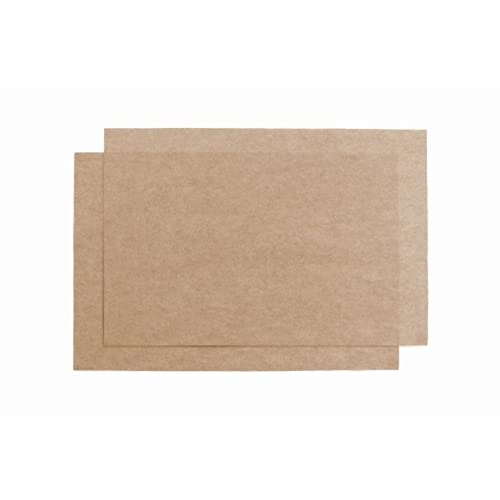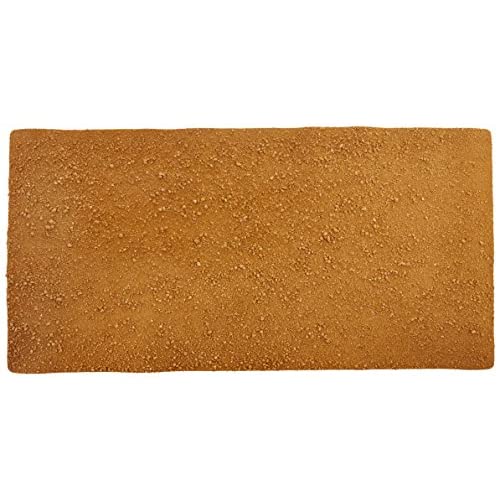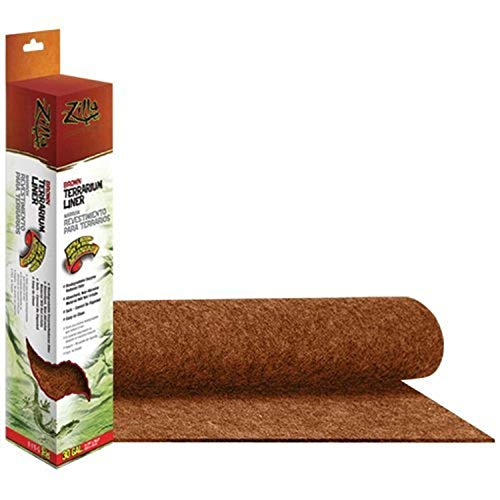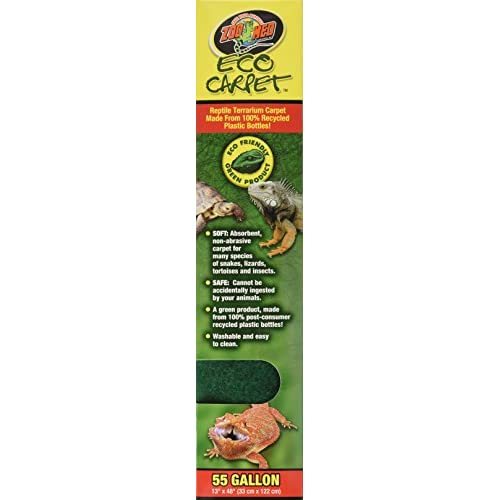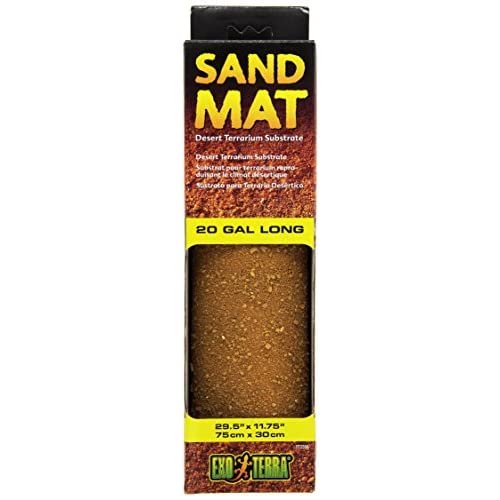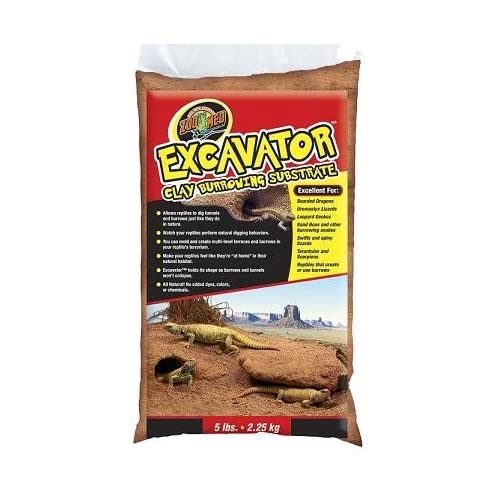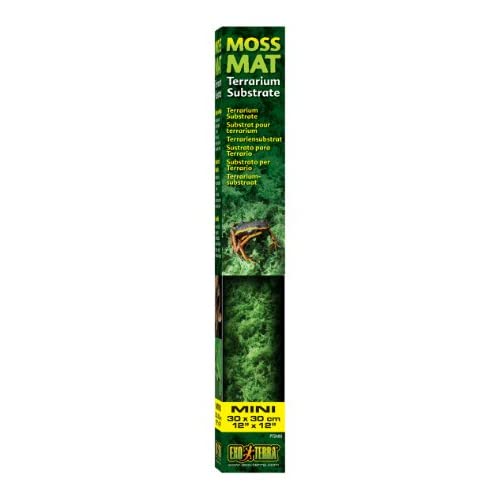Geckos are irresistibly cute. These little reptiles are easy to care for and a popular choice for beginning pet owners. If you’re about to bring one home, please make sure you have one of the best substrates and bedding for leopard geckos.
Solid substrate is safer for leopard geckos. These insectivores will get sick if they eat loose bedding that they can’t digest. Therefore, something as cheap as paper towels or stone tiles is a smart option for their houses. We’ll discuss different types of substrate in our reviews below. We hope this information helps you find exactly what you need.
Setting up a terrarium for a leopard gecko
Before we begin the reviews, let’s talk a little bit about setting up a home for a leopard gecko. You can start with a 20-gallon aquarium that has a ventilated wire mesh lid. Bigger is better if you want your little guy to have room to run.
Next, lay down the bedding and create places for your gecko to hide. If you include damp sphagnum moss inside the hiding spots, it makes it easier for him to shed and stay hydrated.
Finally, set up a place for the gecko to bask and keep the other end of the tank a little cooler. For example, a hot rock placed under the heat lamp can range from 88 to 90°F while the air around it doesn’t go over 85°F. Then the other end of the tank can hover just above 70°. That way your reptile can warm up and cool down safely.
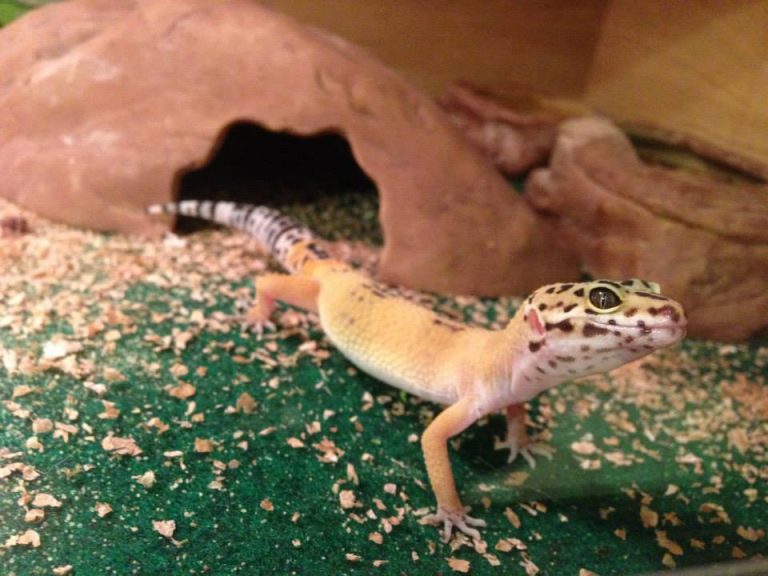
Top Substrates & Bedding for Leopard Geckos
Now let’s look at the best bedding and substrates for leopard geckos.
#1 Carolina Custom Cages Reptile Carpet
Carolina Custom Cages makes one of the best reptile carpets on the market. It’s machine-washable and practically dry as soon as it comes out of the washer. It won’t shrink, wrinkle, or ball up. It also comes with Velcro-like patches to secure it to the bottom of the tank. That’s great because it prevents insects from hiding underneath it.
But you don’t have to wash it in the machine if you want to – just rinse it by hand with cold water. Either way, any detergent you use should be mild, fragrance-free, and hypoallergenic.
The soft surface resembles felt, but it’s made of recycled plastic. This sustainable material comes in a variety of bright and natural colors including sandstone, Kelly green, and candy pink. Purchase two of these so that you always have one ready when you clean the cage.
Why would you pick reptile carpet instead of some other type of substrate? After all, there are pros and cons to this popular material. Although it’s easy to care for, it requires vigilance. If you let the animal’s waste sit on it for too long, you could end up with bacterial problems. It also doesn’t retain moisture for long, hence the need for damp sphagnum moss in the hides. And it’s possible that your reptile’s claws could snag on it if they get too long.
But overall, reptile carpet is safe for your gecko because it’s unlikely he will eat it and end up with impaction. It greatly reduces the when compared to loose bedding.
#2 Exo Terra Sand Mat
The Exo Terra Sand Mat resembles a gecko’s natural habitat because it’s like a rocky desert floor. You can cut it to fit your terrarium, too. It looks and feels pretty natural. When it gets dirty, you can rinse it clean and let it dry.
When it first arrives, you’ll probably need to brush off or rinse off loose particles. But after that initial experience, the sand mat should remain dust-free. The other complaint customers report is that this substrate doesn’t minimize odor as well as some other products do.
#3 Zilla Reptile Terrarium Bedding Substrate Liner
You can also trim Zilla’s terrarium liner to fit an aquarium. If you don’t use it as the main substrate, it works well as a floor liner underneath other bedding. The reason for this is so that your gecko can’t burrow down to the bare glass. This is especially important if you use a heating pad underneath the tank.
The liner is washable and reusable. Just use cold water to rinse off debris, then allow it to dry. The felt -like material is available in several different colors.
#4 ZooMed Eco Cage Carpet
ZooMed’s Eco Carpet is available in a variety of sizes, but it can also be cut to fit. The non-abrasive soft surface is absorbent although it’s made from post-consumer recycled plastic. You can wash it in cold water and hang it up to dry.
#5 Josh’s Frogs Exo Terra Sand Mat
This is one of the best desert reptile mat simulations for reptile. It measures 29.5 “x 11.75” large enough to be used for a pet reptile’s habitat. This product is easy to use, easy to clean and easily cut to the size of the tank. This reptile mat is not dangerous to your pet and you can completely reuse it after cleaning.
#6 Zoo Med Excavator Clay Burrowing Substrate
The Excavator Clay from Zoo Med lets you create a desert wonderland for your pet. Once you add water, you can mold the clay to form hiding places, tunnels, and more. Then after the clay dries, it retains its shape. Although sharp little reptile claws can dig through it, it doesn’t pose the same risk of impaction as a loose substrate would.
There are two things to know about this product. One is that owners recommend putting some clay aside to replace soiled parts. The second is that the material retains heat so be extra careful if you’re using an under tank heater (or just don’t use them together).
#7 EXO-TERRA Moss Mat Terrarium Substrate
This moss mat from Exo Terra will give reptile habitat a most natural appearance. This product acts as a layer of green moss, extremely natural and safe. Moreover, it has a soft texture, does not harm your pet. It also has good absorbency, does not cause an unpleasant odor. And moreover, you can wash them with soap to reuse.
The types of bedding you should NOT use for a leopard gecko
First up in our list of substrates to avoid using in a leopard gecko’s terrarium is sand. Interestingly, this reptile’s native habitat doesn’t have a lot of sand. And since he eats insects, he’s likely to consume a lot of the substrate along with the bugs. The joy he might derive from digging in it doesn’t match the danger it presents.
For one, dusty sand can cause eye infections. Then, calcium carbonate sand neutralizes stomach acid and slows down digestion, turning into cement in their intestines. Even though manufacturers say that it’s digestible, for leopard geckos it is not.
The other group on our list of bedding to avoid includes wood chips, shavings, and coconut fiber. Although aspen is generally safe for reptiles (because cedar oil damages their nervous system), wood substrate is a bad idea. Geckos can’t digest cellulose and it can clog up their digestive system just like sand.
Symptoms of impaction
If your gecko has loose bedding or food that’s not passing properly through his digestive tract, you’ll notice symptoms. These include a bloated stomach, loss of appetite, less energy, and no bowel movements for a couple of days or longer. You might even notice a dark blue spot on his side or abdomen.
To resolve the problem, you can try bathing him in warm water and gently massaging his tummy. But if you don’t see results (like a bowel movement) within a short amount of time, contact your vet. This veterinarian may perform surgery to remove the blockage and save your leopard gecko’s life.
Conclusion
We wish you lots of enjoyment and satisfaction from your time with your new pet. We hope our reviews helped you find the best substrates and bedding for your leopard gecko. If you’re setting up a new terrarium or remodeling an old one, please see our reviews of the best lights, too.
